
Archimedes of Syracuse was an Ancient Greek mathematician, physicist, engineer, astronomer, and inventor from the ancient city of Syracuse in Sicily. Although few details of his life are known, he is regarded as one of the leading scientists in classical antiquity. Considered the greatest mathematician of ancient history, and one of the greatest of all time, Archimedes anticipated modern calculus and analysis by applying the concept of the infinitely small and the method of exhaustion to derive and rigorously prove a range of geometrical theorems. These include the area of a circle, the surface area and volume of a sphere, the area of an ellipse, the area under a parabola, the volume of a segment of a paraboloid of revolution, the volume of a segment of a hyperboloid of revolution, and the area of a spiral.

In visual perception, an optical illusion is an illusion caused by the visual system and characterized by a visual percept that arguably appears to differ from reality. Illusions come in a wide variety; their categorization is difficult because the underlying cause is often not clear but a classification proposed by Richard Gregory is useful as an orientation. According to that, there are three main classes: physical, physiological, and cognitive illusions, and in each class there are four kinds: Ambiguities, distortions, paradoxes, and fictions. A classical example for a physical distortion would be the apparent bending of a stick half immerged in water; an example for a physiological paradox is the motion aftereffect. An example for a physiological fiction is an afterimage. Three typical cognitive distortions are the Ponzo, Poggendorff, and Müller-Lyer illusion. Physical illusions are caused by the physical environment, e.g. by the optical properties of water. Physiological illusions arise in the eye or the visual pathway, e.g. from the effects of excessive stimulation of a specific receptor type. Cognitive visual illusions are the result of unconscious inferences and are perhaps those most widely known.

Op art, short for optical art, is a style of visual art that uses optical illusions.
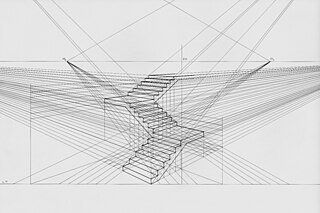
Linear or point-projection perspective is one of two types of graphical projection perspective in the graphic arts; the other is parallel projection. Linear perspective is an approximate representation, generally on a flat surface, of an image as it is seen by the eye. Perspective drawing is useful for representing a three-dimensional scene in a two-dimensional medium, like paper.
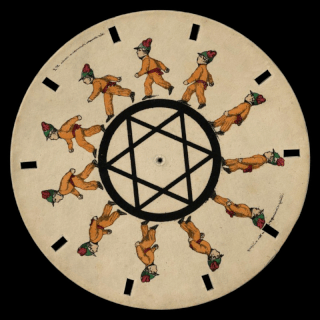
The phenakistiscope was the first widespread animation device that created a fluent illusion of motion. Dubbed Fantascope and Stroboscopische Scheiben by its inventors, it has been known under many other names until the French product name Phénakisticope became common. The phenakistiscope is regarded as one of the first forms of moving media entertainment that paved the way for the future motion picture and film industry. Similar to a GIF animation, it can only show a short continuous loop.
Giacomo Filippo Maraldi was a French-Italian astronomer and mathematician. His name is also given as Jacques Philippe Maraldi. Born in Perinaldo he was the nephew of Giovanni Cassini, and worked most of his life at the Paris Observatory. He also is the uncle of Jean-Dominique Maraldi.

Anamorphosis is a distorted projection that requires the viewer to occupy a specific vantage point, use special devices, or both to view a recognizable image. It is used in painting, photography, sculpture and installation, toys, and film special effects. The word is derived from the Greek prefix ana-, meaning "back" or "again", and the word morphe, meaning "shape" or "form". Extreme anamorphosis has been used by artists to disguise caricatures, erotic and scatological scenes, and other furtive images from a casual spectator, while revealing an undistorted image to the knowledgeable viewer.
Mario Bettinus was an Italian Jesuit philosopher, mathematician and astronomer. The lunar crater Bettinus was named after him by Giovanni Riccioli in 1651.

Essilor International is an international ophthalmic optics company that designs, manufactures and markets lenses to correct or protect eyesight. Its headquarters is in Charenton-le-Pont, France.

The Ebbinghaus illusion or Titchener circles is an optical illusion of relative size perception. Named for its discoverer, the German psychologist Hermann Ebbinghaus (1850–1909), the illusion was popularized in the English-speaking world by Edward B. Titchener in a 1901 textbook of experimental psychology, hence its alternative name. In the best-known version of the illusion, two circles of identical size are placed near to each other, and one is surrounded by large circles while the other is surrounded by small circles. As a result of the juxtaposition of circles, the central circle surrounded by large circles appears smaller than the central circle surrounded by small circles.
Archimedes-lab.org is a free and collaborative edutainment project developed and maintained by Gianni A. Sarcone and Marie-Jo Waeber, two authors and writers with more than thirty years of experience in the fields of visual thinking and education. This educational project is part of the Open Education Consortium and it is supervised by a consulting network of experts specializing in online education.

A zograscope is an optical device for magnifying flat pictures that also has the property of enhancing the sense of the depth shown in the picture. It consists of a large magnifying lens through which the picture is viewed. Devices containing only the lens are sometimes referred to as graphoscopes. Other models have the lens mounted on a stand in front of an angled mirror. This allows someone to sit at a table and to look through the lens at the picture flat on the table. Pictures viewed in this way need to be left-right reversed; this is obvious in the case of writing. A print made for this purpose, typically with extensive graphical projection perspective, is called a vue d'optique or "perspective view".
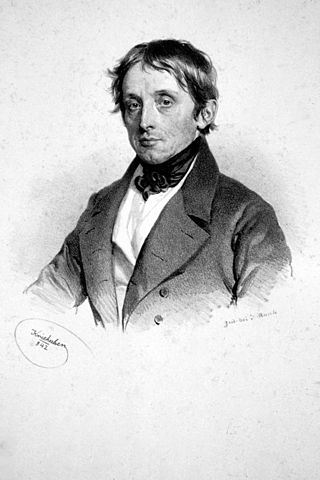
Simon Ritter von Stampfer, in Windisch-Mattrai, Archbishopric of Salzburg today called Matrei in Osttirol, Tyrol – 10 November 1864 in Vienna) was an Austrian mathematician, surveyor and inventor. His most famous invention is that of the stroboscopic disk which has a claim to be the first device to show moving images. Almost simultaneously, a similar device was developed in Belgium.
The globe effect, also known as rolling ball effect, is an optical illusion which can occur with optical instruments used visually, in particular binoculars or telescopes. If such an instrument is rectilinear, or free of rectilinear distortion, some observers get the impression of an image rolling on a convex surface when the instrument is panned.

Barrier-grid animation or picket-fence animation is an animation effect created by moving a striped transparent overlay across an interlaced image. The barrier-grid technique originated in the late 1890s, overlapping with the development of parallax stereography (Relièphographie) for 3D autostereograms. The technique has also been used for color-changing pictures, but to a much lesser extent.
Kōkichi Sugihara is a Japanese mathematician and artist known for his three-dimensional optical illusions that appear to make marbles roll uphill, pull objects to the highest point of a building's roof, and make circular pipes look rectangular. His illusions, which often involve videos of three-dimensional objects shown from carefully chosen perspectives, won first place at the Best Illusion of the Year Contest in 2010, 2013, 2018,and 2020 and second place in 2015 and 2016.
Elena Moskaleva is a Russian visual artist specialising in optical illusions.
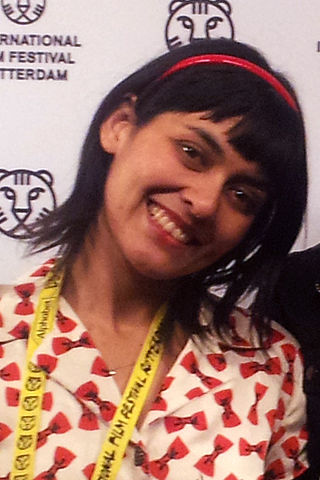
Paola Andrea Lattus Ramos is a Chilean film, theater, and television actress, known for appearing in films such as Tony Manero (2008) by Pablo Larraín and Optical Illusions (2009) by Cristián Jiménez.
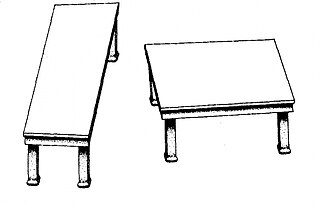
Shepard tables are an optical illusion first published in 1990 as "Turning the Tables," by Stanford psychologist Roger N. Shepard in his book Mind Sights, a collection of illusions that he had created. It is one of the most powerful optical illusions, typically creating length miscalculations of 20–25%.

Craig Anthony Tracy is an American bodypainting artist and television personality based in New Orleans, Louisiana. He is widely known as the expert judge and the producer of Skin Wars, a bodypainting reality competition which aired on the Game Show Network between 2014 and 2016. Tracy is the founder of the Craig Tracy Gallery, previously known as PaintedAlive Gallery, in the French Quarter of New Orleans. Tracy is also the recipient of the World Award in the airbrush category at the World Bodypainting Festival in 2005.





















